By Tom Lewis*
THE size of a new Australian aircraft carrier is what first impresses you. These ships are huge – the biggest ever operated by the Navy. At 27, 850 tonnes they are 7,850 more displacement tonnes than the old carrier Melbourne, the fixed wing ship which finished up in 1984, when the Hawke Government decided to get the country out of the carrier business. With that decision went a whole heap of capability skill sets. But now they are being re-learnt.
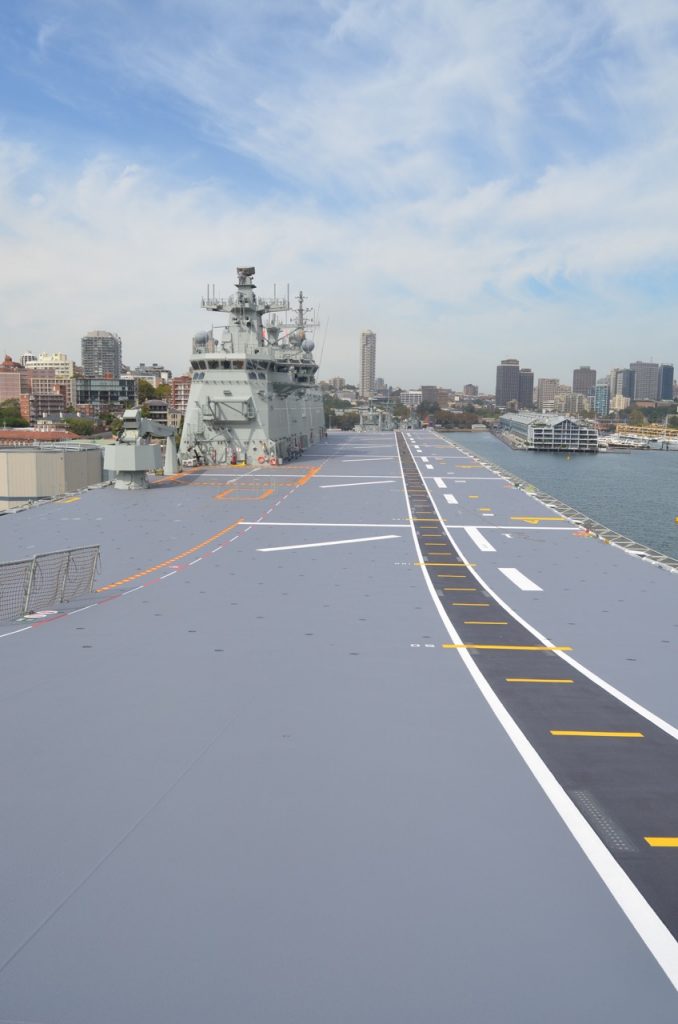 The Navy doesn’t call these two ships – HMAS Adelaide and HMAS Canberra – aircraft carriers. They call them Amphibious Assault Ships, but also LHDs – Landing, Helicopter, Dock vessels. But your average civilian would look at these monsters and see a floating runway; superstructure on the right hand side – could be called an island – and see an aircraft carrier. So what’s the difference?
The Navy doesn’t call these two ships – HMAS Adelaide and HMAS Canberra – aircraft carriers. They call them Amphibious Assault Ships, but also LHDs – Landing, Helicopter, Dock vessels. But your average civilian would look at these monsters and see a floating runway; superstructure on the right hand side – could be called an island – and see an aircraft carrier. So what’s the difference?
First, these ships carry helicopters, not fixed wing jets. The “ski jump” on the bow remains – it is part of the design and helps lift conventional planes into the air, although the LHDs may never carry them. Removing the ski-jump, which weighs hundreds of tonnes, would change the ship’s handling dramatically and require a lot of work. So it was left in place.
Second, these ships are designed around a different concept. They are not to project airpower, but rather land power, for they are to carry infantry which can be put ashore by the ship’s helicopters, and also its landing craft – the “Landing” part of the title, which leave the LHD for their destination through the stem doors, which have would have been opened to flood the rear section: a giant Dock.
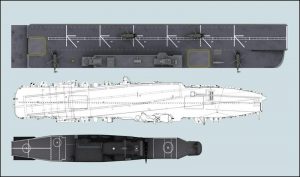 It’s quite a complicated equation. Even though as a retired Navy bloke, and someone who had experienced land warfare, I understood the concepts well enough, it’s another deal to walk down into the Dock – fortunately dry at the time – and feel dwarfed by the very size of a giant cavernous space, inside the stern of the vessel.
It’s quite a complicated equation. Even though as a retired Navy bloke, and someone who had experienced land warfare, I understood the concepts well enough, it’s another deal to walk down into the Dock – fortunately dry at the time – and feel dwarfed by the very size of a giant cavernous space, inside the stern of the vessel.
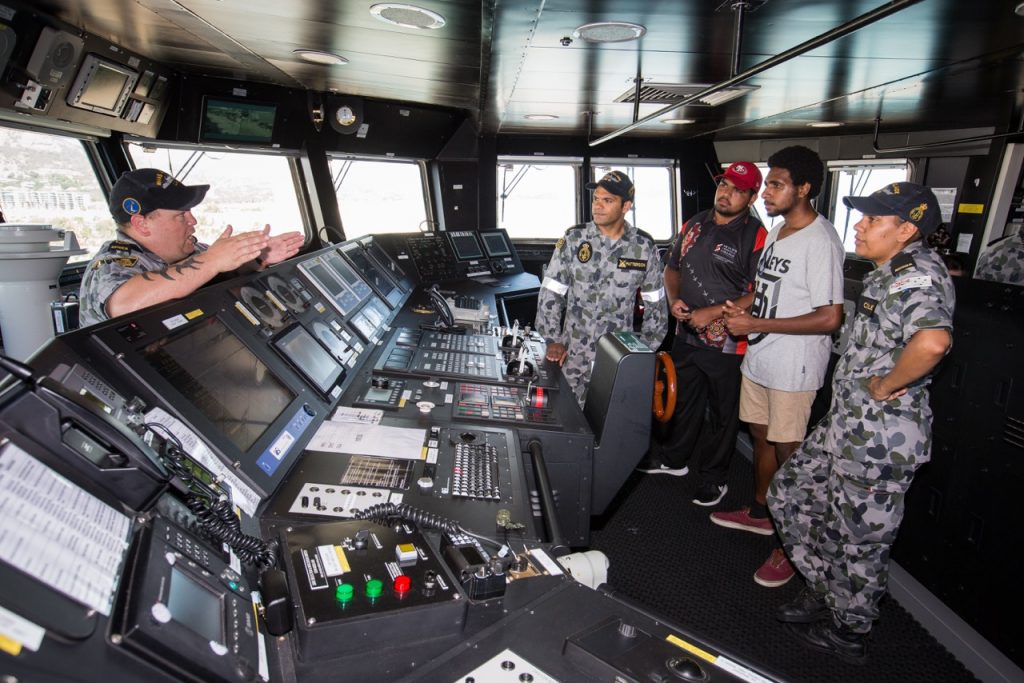
But many warrior-types I speak to want to know just one thing. How many infantry can this ship put ashore? It’s a difficult question. The first landings would be from a company – 120 soldiers, but they’d be backed up by all that would be necessary: artillery, a headquarters section, signals, and so on. The helicopters would if necessary transfer more troops out to a defensive arc. Officially, each LHD can put up to 1000 soldiers ashore.
How many helicopters? The hanger can accommodate up to eight medium sized helicopters with 18 medium sized helicopters able to be carried if the light vehicle deck is also used. Like everything measurable about an LHD, it all depends on what you want to do on the mission. Over 100 vehicles can be carried but that would be so long as you weren’t cramming the ship with tanks. Your load-out is going to be very different for a humanitarian rescue mission as opposed to an infantry assault.
I was impressed by the shiny new feel of the ship, but then again she is still pretty much a new arrival. The ship’s company morale is high: they’ve got one of the most capable platforms in the world and they know it.
For those of us, including me, concerned about defence of the vessel, that’s where the new Air Warfare Destroyers come in. Three of them are rolling out of the yards, and in a hostile situation that’s where they would be: protecting an LHD. There’s close-up defence on board the LHD too: 20mm Typhoon chain guns are mounted at the “corners” of the ship: two at the bow and two at the stern. There’s also spots for the trusty 50 calibre (12.7mm) machine guns, and a towed Nixie anti-torpedo defence system.
All up, the two new LHDs represent a big step up for naval and amphibious capability in the Australian forces. A big well done to all concerned.
-o-o-O-o-o-
The writer would like to thank Lieutenant-Colonel James Parkins for facilitating his tour of HMAS Adelaide, and also Captain Tony Rayner RAN and Commodore Lee Goddard RAN.
*Dr Tom Lewis is a military historian and former naval officer. His latest book is Honour Denied: Teddy Sheean, a Tasmanian Hero.
More photos by the author of various parts of HMAS Adelaide are below:
______________________________________
______________________________________
______________________________________
______________________________________
______________________________________


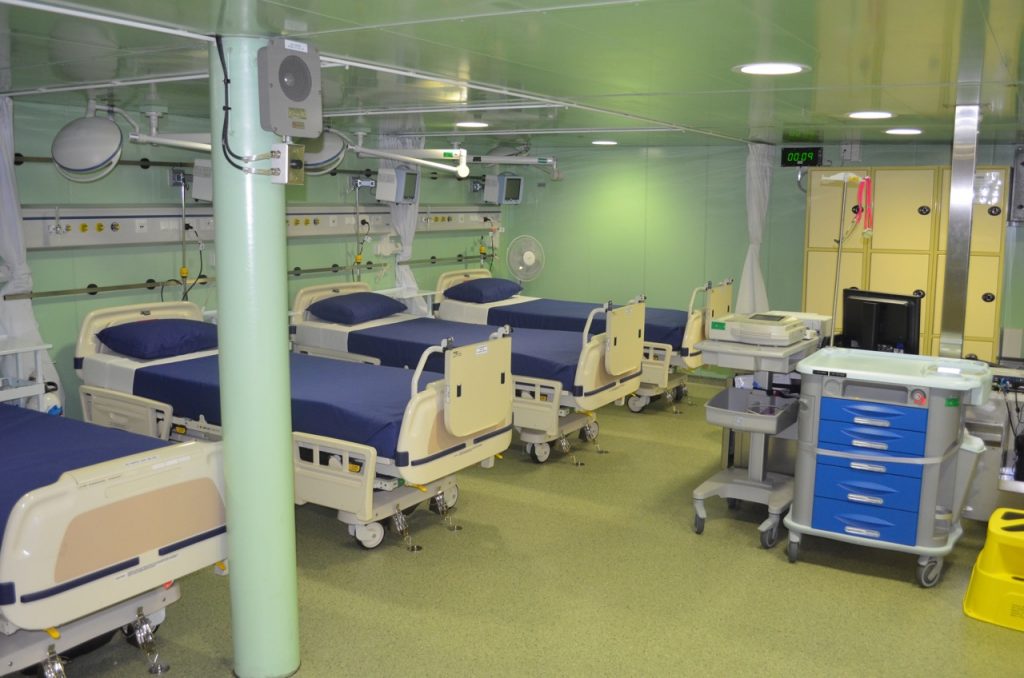
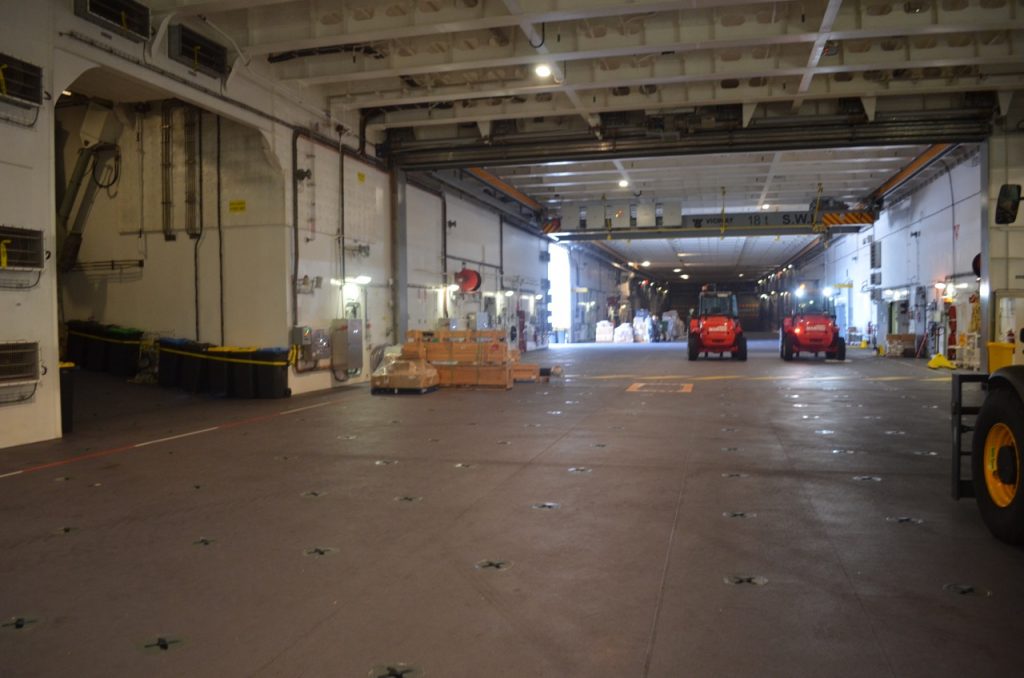
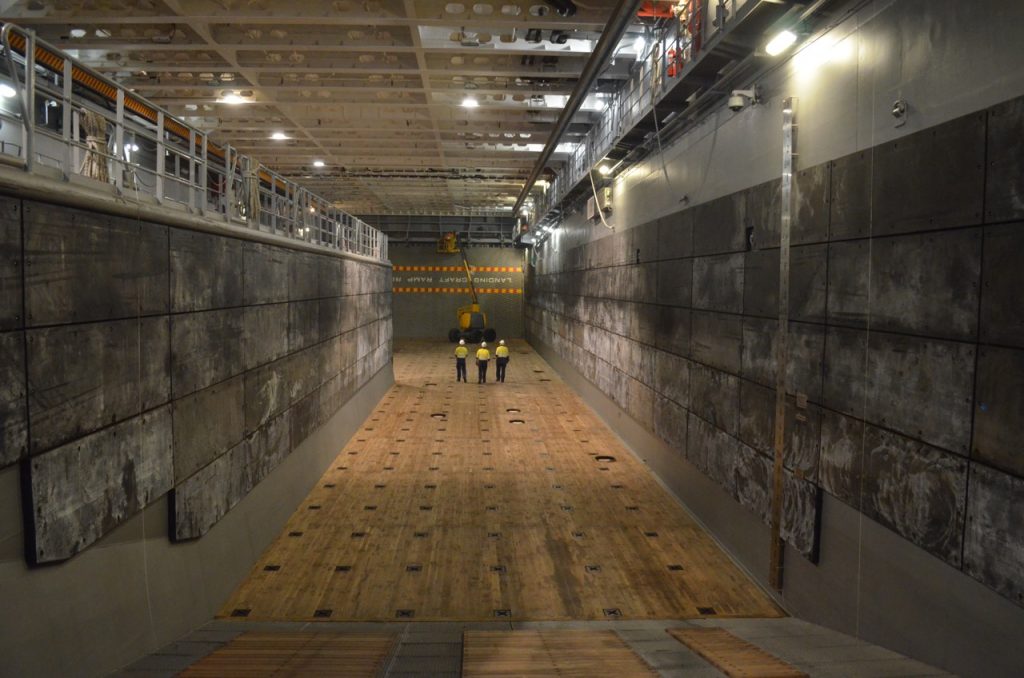


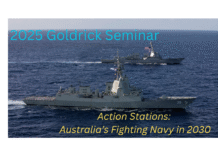
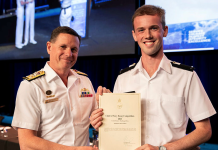
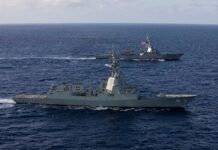
Why the ramp if you are not procuring a STOVL aircraft?
The design came with it and would have required major reworking and costs to remove, so they left it.
It also allows flexibility with allied planes for short term landings if needed
The commitment to a build program for the extra vessels can be over 15 years…as long as the blueprint is laid out and the work starts.it will then be 2032 and the vessels should have an extended life of about 30 years…taking it out to 2062……..it makes sense.
I’m going to hit very hard here because I believe it has to be said. All sides of politics have let
our defence forces down. Most of the time governments talk the talk, but in action fall far short of the realism of the what our forces really need in capabilities. They talked up this massive naval plan – more than $200 billion of taxpayers’ money. Let’s see what we are getting for that: 3 destroyers, 9 frigates, 12 off shore patrol boats, 12 subs, 2 amphibious ships and 2 replenishers. So who thinks this is a grand plan? So with current assets we have 3 destroyers ,8 frigates, 6 subs, 12 patrol boats, 6 mine vessels, 2 amphibious ships and 2 replenishers. Sorry guys, but how about some realism. One extra frigate and 6 more subs is not a massive naval expansion.
If you wanted to do a naval expansion, I would have kept 8 Anzac frigates, build 10 more frigates, and have 3 destroyers, this would make 21, and have 12 subs, build 8 Mine multi-role corvettes, and 12 off shore patrol boats. I would have kept the last Oliver patrol frigates for patrol frigates I would build two LHDs and two aircraft carriers, and have 36 stovl JSF -B version fighters.
ADF personnel do a fantastic job, And a big thanks from all the people of Australia and thank you for your service. As for LHDs, it is no surprise they’re not at full capability. It’s strictly a helicopter/amphibious ship with a ski jump. And next election who do we vote for, that’s a good question. I don’t have the answer for that.